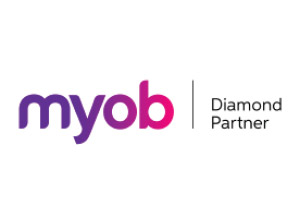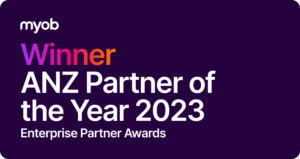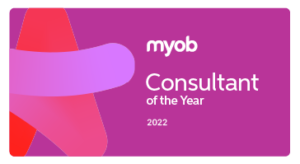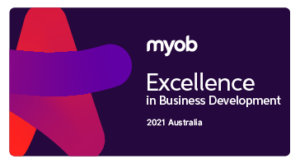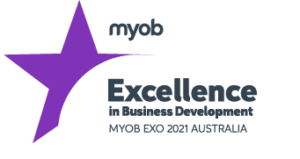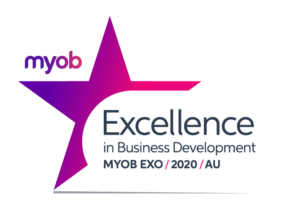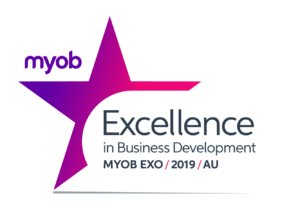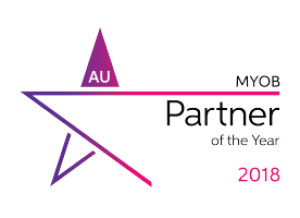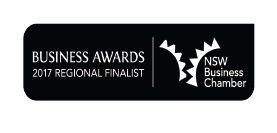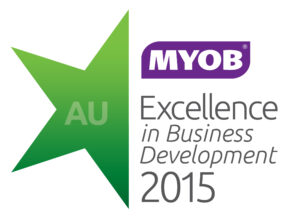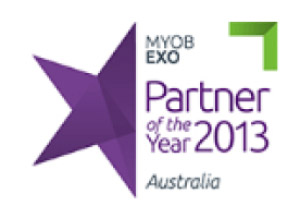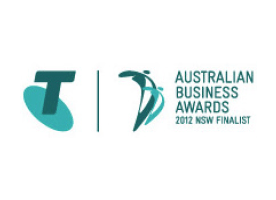Challenges of Recruiting in a Growing Business – Part 1: Finding the Right Talent
How to appoint the best talent to work for your companyThis is article 1 in a series of 3 articles. This article covers “How to appoint the best talent to work for your company”. Article 2 will cover “The Induction Process” and Article 3 will cover “Performance Appraisal and Performance Management”.
Surveys of growing businesses show that one of the biggest challenges is attracting skilled and talented team members. While some businesses try to outsource this, it inevitably leads to an erosion of company culture. Recruiters are generally good at finding candidates with suitable skills but struggle to find a good fit for the organisational culture.
Job Description
Before commencing a recruitment initiative, you need to be very clear on the skills you require for the particular role. Create a detailed job description which will act as a filter to deter unsuitable candidates and attract those that have the defined skills. The job description should also list the key performance indicators (KPI’s) that the team member will be measured on. Making this clear right from the start sets the ground rules.
You should describe in detail the type of person that you are looking for. For example, if you are looking for an enthusiastic, recent graduate with a “can-do” attitude and a passion for learning, you should make this clear in the job advert. If your work environment is a highly structured command/control environment and you are looking for people that will thrive in this environment, then say so. If your environment is one in which your employees have the freedom to use their own initiative, you need to explain this to your candidates.
The role of the remuneration package in the job description
A remuneration package consists of salary plus incentives, bonuses, or commissions if relevant. In attracting high-quality candidates, remuneration is as important as culture and career progression. You need to detail the remuneration package so that candidates can compare it to other offers they may be receiving. For many candidates, salary may not be the main consideration. Culture, working conditions, working hours, and working environment play a large part in the candidate’s decision.
In a competitive job market, your candidate will have a good idea of what their value is. This means that if you find that you are attracting candidates with poorer skills than you require. The likelihood is that your remuneration package is too low. Increasing the package to the next level will, as a rule of thumb, attract a better quality of a candidate.
Finding the right candidate
A job description and remuneration package will attract the right candidate, but they will usually be hidden in a pool of unsuitable or suboptimal choices. The next job is filtering out and narrowing down your field until you are left with the right person for the job.
Do It Yourself or Recruiters
Growing companies often see the expense of a recruiter as excessive. A recruiter will take a percentage of the first years’ salary. This may typically range from 15-25%, which at first glance, looks like a lot of money. However, you need to consider the amount of your own time you will consume if you do it yourself. Doing it yourself requires you to draft an advert, place the advert on a platform like ‘Seek’, review the job applications that are received (of which there may be hundreds), draw up a shortlist, do an initial interview with candidates, and proceed to a final face-to-face interview with the best candidates. Recruiters often have a network of candidates that generally will not respond to an ad on a job-seeking platform which may limit your access to the right candidate. The pros and cons need to be taken into account. Sometimes a combination strategy of doing it yourself and using a recruiter works well.
A recruiter that understands your business and culture is far more valuable to you than someone who simply has a database of candidates looking for employment in your industry.
Your Website
Modern candidates will do their research about your company on the web before applying for a job. Your website should reflect your company image. It should be targeted to make it attractive to the type of candidate you would like to attract. Any negative publicity on the web is visible to candidates. Therefore, be cautious about expressing personal or political opinions on social media, as you will detract as many candidates as you attract. First impressions count.
How do you know you are choosing the right candidate?
Ideally, the right candidate will bring the skills you need alongside a personality that fits in with the company culture. Your job description and remuneration package do the job of attracting candidates, but how can you be sure that you are selecting the right person?
The best indicator for a successful candidate is on-the-job performance, so your hiring strategy should focus on how to estimate and project this quality in your candidates. This is, however, very difficult to accurately replicate through traditional hiring workflows. Hiring managers must be clever and consider how to get the most out of their hiring process.
Traditional and typical hiring approaches will rely on:
- Resume and cover letter applications
- Interviews
- References
Some organisations will also turn to cognitive and personality tests for a more objective measure of a candidate’s suitability for a role.
Resume and cover letter applications
Resumes and cover letter applications are usually the first step in identifying and filtering out candidates. Resumes are a historical perspective of the person’s previous work and qualifications. It demonstrates what they have achieved and how they meet the requirements for your role. Things to look for are:
- Previous roles – what were they responsible for, and what did they deliver
- Qualifications – what formal education do they have that would be relevant to the role
- Comparisons – does the resume align with their social media or LinkedIn profile?
Cover letters are a little bit more of a window into the candidate’s personality. You can start to get an idea of how they communicate and what they value in both their job and your organisation. Together, the resume and cover letter form the initial perception of your candidates and can identify those with the skills and personality to continue to the next stage.
The interview
Phone interviews with promising candidates are a good way to screen out those that are not suitable for the role. If in doubt, proceed to a face-to-face interview. Regardless of the medium for the interview you should be aware that the candidate will be nervous. Try to put them at ease, by engaging in conversation before diving into technical questions about their skills and experience.
Make sure you do your research on the candidate (social media) to determine whether a candidate will fit into your organisation. Platforms like LinkedIn provide an opportunity to verify a candidate’s resume. You can check that employment dates correspond with the information they have published.
Make notes during the interview, particularly if you are interviewing a large number of candidates. As with anything in business, avoid making snap decisions. The person you are interviewing may appear to be the perfect candidate, but the next one in the door maybe even better. Candidates are quite understanding that there is a process, a good way to end the interview is to explain the process to the candidate so they know when you will be getting back to them.
During the interview, one of your tasks is to sell the company to the candidate. At the same time that you are evaluating them, they will be evaluating you to decide if this is a place they want to work.
How to ask the right questions and avoid the risks of interviews
Interviews are not the best predictor of job performance, but you can still uncover valuable information. Consider the goal of the interview. Are you looking to verify the information already supplied on resumes or cover letters? Or are you looking to get a better understanding of the candidate’s personality and how they will fit into your organisation?
A risk in interviews is that you can form strong first impressions quickly with information that has little relevance to job performance. Be aware that a first impression could create a bias that hides important information later in the interview. Keep your mind open to all candidates and give each individual a fair chance.
Some companies rely on brain teasers or trick questions in their interview process. While you may think you are testing a candidate’s adaptability and problem-solving skills, these brain teasers and trick questions in the interview process are poor predictors of job performance. Instead, ask employees about things relevant to the job opening. Assess their skills related to the everyday tasks they will be performing and challenge them in ways that might traditionally appear on the job.
What to look for in an interview
Interviews are a good opportunity to discover intangible qualities about your candidates:
- Is the candidate conscientious? Do they care about getting things right and done to their best ability?
- Are they a natural learner, or do they make continued efforts to improve the quality of their work? What does the candidate learn from failure/mistakes?
- Can the candidate apply new information to real-world/real-life activities? These people can typically retrain and learn new processes and systems with ease, streamlining the onboarding process,
- Does the candidate solve problems creatively and think outside the box?
- Has the candidate shown a record of past success? Do they aim for success in non-work-related fields/hobbies etc.?
As with a job description, it is good to be specific without asking leading questions. Phrase your question in a way that can uncover if a candidate is conscientious without asking it outright.
Appointing the Successful Candidate
At the end of the interview process, you may choose to call a small number of candidates back for a second interview, possibly with their team leader. This will put you in a good position to make an informed decision. The above process should be concluded as quickly as possible because good candidates are in demand, and delaying interviews may mean you lose them. Once you have decided on your top two or three, make a verbal offer to your top candidate and wait for their acceptance or rejection before you inform candidate two and candidate three.
Convert your verbal offer into a written offer as quickly as possible. Your offer can be conditional to crossing the T’s and dotting the I’s. For example, referees need to be contacted, visas need to be checked, non-complete causes need to be read, and, in some cases, police checks need to be done. Provide the candidate with a job description, confidentiality agreement and any other documents that they need to sign before accepting your offer. Be as transparent as possible. Once the offer is signed by the candidate, go back to the unsuccessful candidates, let them know, and give them feedback on why you chose somebody else.
Potential risks with reference checks
You should be aware that everything that the candidate can control in the hiring process will be carefully included to present them in the best light. They will choose the best examples from their previous experience and carefully pick references that can be recommended. While you should not be searching for a reference check that makes or breaks a candidate’s chances, be aware of who they use as a reference from each previous role, their title, and the relationship they have with the candidate. You can match up the information you learned in the interview with what you learned from the reference check.
Choose the right software to support your growing organisation
A growing team will likely expose bottlenecks and inefficiencies in your onboarding process. There are important steps that must be achieved to maintain compliance, streamline the process for your payroll team, and set your new hire up for success.
Personal information must be securely collected and stored, essential documents signed, and a new employee set up for payroll, with the relevant information sent to the federal tax institution. This can become a tedious and time-consuming endeavour, leading to mistakes from the manual duplication and re-entry of data across systems.
Give your new starters a smooth transition into your organisation and remove the headaches from the onboarding process with automation. The MYOB Enterprise suite is built to improve and automate your onboarding workflows. Both MYOB Advanced Payroll and MYOB Advanced Workforce Management have specific functionality to support your onboarding workflows.
Spot the signs you have outgrown your software
It is common for growing organisations to be hampered by inefficient workflows and manual processes. There are several signs that you are beginning to outgrow your current systems:
- Do you rely on multiple spreadsheets, disconnected systems, or manual data entry processes?
- Is your growing team placing a significant burden on your payroll administrators?
- Are you operating across multiple locations and struggling to keep information up to date for all your teams?
- Has managing a growing list of products and services become untenable?
- Can you continue to provide dedicated, personalised service to your growing customer base?
Off-the-shelf accounting software focuses primarily on accounting functions such as bookkeeping, accounts payable, and accounts receivable. It is designed to address the specific needs of accounting departments. It is pre-configured and assumes one size fits all.
If your off-the-shelf accounting software is struggling to meet your needs, then consider upgrading to a fully featured, cloud-based business management platform and maintain your existing industry add-on products. MYOB Advanced Business (Acumatica) is integrated with a variety of best-of-breed add-on solutions.

Software Implementation Risk Guide Brochure
Download nowWhere to next?
Article 2 in our Challenges of Recruiting in a Growing Business series covers “The Induction Process”. Read Article 3 for a discussion of “Performance Appraisal and Performance Management”.
Talk to our expert team about strategies to improve efficiency in your organisation. From hiring to onboarding and business management, our friendly consultants can guide you up the technology mountains with clever technology solutions. Email sales@kilimanjaro-consulting.com or call 1300 857 464 (AU) or 0800 436 774 (NZ).

